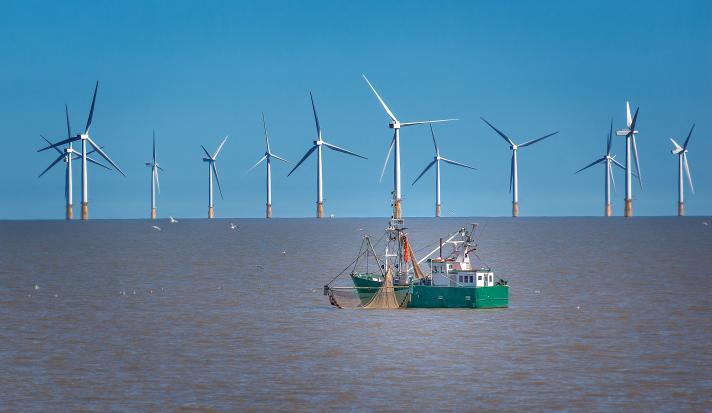x
In crowded seas such as those around the European Union – including, for example, the Baltic Sea, the North Sea and the Mediterranean – pressures on the environment are building and space is at a premium. In managing these areas, the interests of different economic sectors, including fishing, energy, shipping and tourism, must be considered. The EU has sought to balance the different interests while preserving the marine environment through its integrated maritime policy.
x
One idea that has been put forward to make more efficient use of the seas and minimise the footprint of human activities is offshore platforms that combine multiple uses. Use of platforms is well developed for energy exploitation – there are about 180 drilling rigs in the North Sea, for example – but what if in future platforms could be refocused on wind or wave power, while also being useful for activities such as aquaculture and shipping?
In principle, platforms offer efficiencies, such as maximising the amount of energy generated from one platform if different energy generation methods are used, while minimising the amount of space taken up and saving on operational and maintenance costs. In practice, however, such multi-use is in its infancy.
x
Nevertheless, a number of experimental and pilot projects point the way forward. The EU-backed MERMAID project, for example, looked at how multi-use platforms could be developed around the European coast. It tested uses of platforms in the Baltic Sea, the Wadden Sea off the Dutch coast, the Atlantic Ocean (Bay of Biscay) and the Mediterranean. The different platforms combined, for example, wind turbines and fish farming, and seaweed farming and wave energy. The project found significant benefits in terms of efficiencies arising from shared infrastructure, resources and services (such as maintenance services). Multi-use platforms could be a benefit to the EU in terms of both renewable energy and sustainable aquaculture, for example.
Another project, Space@Sea, is working on creation of a concept of a low-ecological impact modular ‘island’ that could be deployed at sea. Such islands would have combined uses, including as energy and transportation hubs, as living space and for food production. The project brings together a large number of partners from across the EU and runs until 2020.
But for the results of such projects to be fully exploited, a range of steps will have to be taken to address the obstacles confronting multi-use platforms. These tend to be organisational and legal rather than technical. For example, different activities in the seas are subject to different permitting regimes and regulatory processes, meaning that obtaining all the necessary permissions for a multi-use platform could be an arduous exercise. Such obstacles might mean that the costs of installing a multi-use platform will be high relative to separate single-use platforms, even though the ongoing costs of running multi-use platforms might be lower.
One recently concluded project, MUSES, studied these issues and set out different groups of recommended measures for multi-use projects, depending on the combination of activities – for example wind energy and fish farming. The project found that a strategic approach to multi-use is necessary with specific consideration being given to how best to enable the most common multi-use combinations throughout planning and licensing processes, and in respect of necessary safeguards including environmental impact assessments.
And of course more dialogue between economic sectors, regulatory agencies and users of platforms would provide valuable underpinning for further work. Because the concept of multi-use platforms is still young, more learning and communication of the potential benefits to the general public are also vital to foster acceptance of the idea.
x

